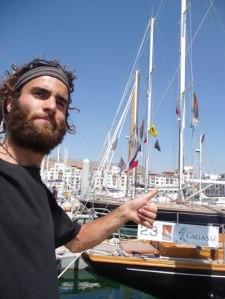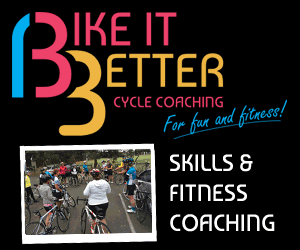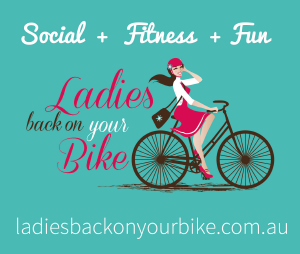By bicycle, sailboat and paraglider around the world: Simon Vincett talks with a French man who has made his boyhood dream a reality.

At 15, Olivier Peyre, read a book of two men who travelled around the world by bicycle. The idea captivated him, and just knowing it was possible convinced him that he would have to do it.
Peyre, of Grenoble, France, completed school, followed by an engineering degree, and the dream never diminished. It became a project, with myriad challenges to overcome, even down to the very nature of the travelling. “With years, ideas came,” Peyre explains. “The idea of turning around the world by bicycle and taking planes across oceans didn’t appeal to me so much because it was not very aesthetic. If I cross continents on the bicycle, there must be another way more consistent with the bicycle.”

He hit on sail power as the answer, and found it was possible to hitch rides on yachts to cross the oceans. “I got information and found it was possible to do this. I could go across the Atlantic Ocean from the Canary Islands in October, and if I was in Panama in February then I could cross the whole Pacific. Then there was Asia and that’s it. So there it was—I could do a world tour with no petrol means.”
Meanwhile paragliding was becoming a favourite activity for Peyre and one he did not want to leave behind. “The paragliding was addictive and new equipment had been out recently with extreme lightweight and little volume. This made it possible to carry one on a bicycle! And since it’s possible, why not do it?”
The concept was complete. “It became a zero-carbon world tour,” Peyre explains. “The world is using its reserve of fossil fuel at an excessive speed and increasingly ruining our habitat. I want to show that a great thing such as turning all around our planet can be achieved without petrol and that it is even more fun!”

Departure: July 2008 from Grenoble, France
Distance so far: Bicycle 37,766km; sailboat 17,500km
Paragliding sites: 145
Return: 2017?
Peyre is currently travelling up the coast of Western Australia en route to Darwin and another sea leg to Indonesia. He arrived in Australia at Newcastle in September 2013 with his partner, Nadege, who has travelled with him for nearly half of the trip.
“Our itinerary is roughly planned a year before depending on the paragliding spots, place we want to visit, our visa dates and when sailing boats leave for the next country. We like to build our own travel. We don’t like to get inspiration from travel guidebooks. Travelling by bike allows you to see so many things and we don’t feel it necessary to pass by the ‘must see’ spots.”
Nadege decided to leave the trip in Melbourne—a difficult decision for both of them.

“It was her choice was not to continue because she was not realising her life,” Peyre explains. “Even though I tried very hard to include her and for her to be really part of the trip, it was not her dream…But it was impossible for me to go back to France and give up on what I had already done. So I decided to go on. It’s a realisation of my life and it will break my heart forever if I give it up. I have to consider two or three years away from Nadege. Can we keep up our relationship? It’s a tough choice but I have to risk it.”
This was not the first challenge to Peyre’s commitment to his quest. For all the physical hardship of the journey, the extended separation from family and friends has provided the most difficult situations of impasse. “It’s one of the challenges of such a long trip,” admits Peyre.
He relates an earlier occasion while he was travelling around New Zealand with Nadege in 2012.
“In the middle something happened: my sister wanted to get married. I had told my family that I would take four years. I was already thinking of eight years. Lots of people—my surrounding family and friends—wanted to see me. So I had to make a big choice here: my tour was supposed to be a zero-carbon world tour but my sister wanted me to come over. I had to choose between the purity of my trip and my family and my culture that made me, my roots.
“It was a hard choice—I nearly didn’t go. I tried hard to find an alternative to the plane to go back, such as hitch hiking a fast sailboat back to Europe or even hitch hiking on the roads of Russia. In the end we decided we had to take a plane. We came back for five months in France. It was beautiful. It was a good and smart choice to make. My parents told me it was better to come to something happy than to something sad, and they were correct.”
“The use of wind is an experiment. It’s not to double the mileage; it’s to explore the concept, to give other people ideas as well.”
Now back on the quest and in Australia, Peyre decided to attempt kite biking across the Nullarbor Plain.
“Is there any other place in the world where you could do that?” he asks, though admitting that there were issues with realising the concept. “The paraglider was too big. I had some kites made for this in New Zealand. It’s a crazy dream and I believe that sometimes crazy things are possible and you just have to try.”
The seed of the idea was formed for Peyre on an earlier visit to Australia, when he had driven across the Nullabor. “There was a good amount of time when there was nothing. Why not use the wind, the space, for travelling? When something is coming I can always drop the kite.”

On this visit, now accompanied by a friend Sebastien, Peyre put his plan into action. “It was successful for a little bit,” he says. “I made 19km the first day. I was really scared, really prudent, really careful. Then I became a little more relaxed and I got the technique so that when a car was coming I would stop and raise the kite and wait. As long as the wind was right and there were no obstacles it was okay. I did 40km the second day without pedalling. I was going faster than Sebastien.”
“However, the kite was not a wing and was not really that good. A kite surfer friend here [in Australia] is going to work on another version. And maybe up the west coast there might be some stretch with no trees again and maybe through Mongolia and other countries it might work.”
His engineering background guides Peyre’s vision for adapting equipment and utilising novel methods of travel.
“I like working on things, I like inventing,” he explains. “The use of wind is an experiment. It’s not to double the mileage; it’s really to add some creativity to the trip. It’s not to go faster. It’s to explore the concept, to give other people ideas as well.”
In Australia, Peyre lists as highlights crossing the Alps from Sydney to Melbourne, through Jindabyne and Thredbo, crossing the Nullarbor and paragliding beside the Great Ocean Road.
Of the Nullarbor, he says, “People say there’s nothing to see but I think the nothingness is something to see. It’s so huge that you feel your real size in relation to the rest of the planet.”
But the Great Ocean Road was the number one venue in Australia so far.
“Johanna Beach is one of the best spots for flying,” Peyre enthuses. “Taking off from the beach and going high in the air, then dropping the wing and landing just next to the tents.”
Further on, he and Sebastien were hosted by a family in Peterborough.
“We were flying on the beach and I fitted my second harness and I took some kids up with me. Then I took the mum on a flight. I was good to share this pleasure of life. It gives so much. They said it was the best day of their lives. I received so much during my trip—it’s so great when I can give in return.”

For more visit www.flynroll.com.
Olivier’s project is made possible by sponsorship from Porcher Sports, Brunton, Camsports, Ozone Paragliders, Ikon Kiteboarding and, in Australia, The Fitzroy Revolution.
Ride On content is editorially independent, but is supported financially by members of Bicycle Network. If you enjoy our articles and want to support the future publication of high-quality content, please consider helping out by becoming a member.



Reblogged this on Sykose Extreme Sports News.